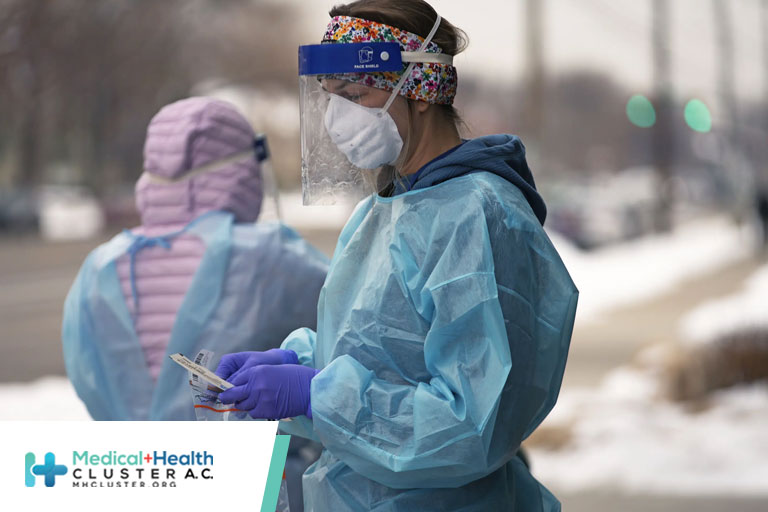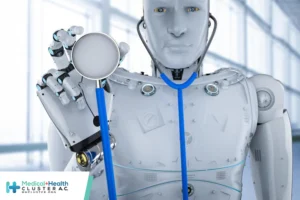En respuesta al anuncio del alcalde Ismael Burgueño Ruiz sobre...
Leer más
The U.S. COVID-19 Public Health Emergency Ends in May. Here’s What Will Change

Almost since the emergence of COVID-19, the U.S. has treated the disease as both a national and public health emergency. That will end on May 11, 2023, the Biden Administration announced Jan. 30. The decision to end these important designations will have wide-ranging impacts on many health measures that Americans have come to take for granted over the past few years, including free vaccines, booster shots, tests, and treatments.
Declaring COVID-19 a public health emergency (PHE) in Jan. 2020 allowed the federal government—via a COVID-19 response led by the Department of Health and Human Services (HHS)—to access funds and resources to pay for everything from personal protective equipment such as masks, to tests and vaccines, and respond in other ways to the pandemic. Under the PHE, the government could also modify Medicare and Medicaid reimbursement policies to increase access to treatments and other resources critical to controlling the spread of COVID-19. Two months later, President Trump declared a national emergency surrounding COVID-19, which opened up additional funding for the response, including continued coverage for people under Medicaid and expanded funds for hospitals to care for COVID-19 patients.
The declarations allowed “a public health approach to health care during the pandemic,” says Dr. Josh Sharfstein, vice dean for public health practice and community engagement at the Johns Hopkins Bloomberg School of Public Health. “They helped a lot of people to get services. Now we’re going back to a health care approach to health care, and that brings all of the weaknesses of our system into play.”
Sharfstein notes that when the emergency declarations end, more than just access to COVID-19 services will be affected. The funding made available through the declarations made it possible to continue covering millions of people under Medicaid, even if their eligibility had changed; the Kaiser Family Foundation (KFF) estimates that anywhere from five to 14 million people could lose Medicaid coverage if states deem they are no longer eligible when this provision ends. “The majority of them are expected to be Black and Latino people, so there are concerns that health inequities will worsen,” says Dr. Jose Figueroa, assistant professor of health policy and management at the Harvard T. H. Chan School of Public Health.
Here’s what will else change when the national and public health emergencies end in May.
COVID-19 vaccines
COVID-19 vaccines and boosters will continue to be covered for people with private insurance when given by in-network providers, but according to an analysis by KFF, people may have to pay out-of-pocket if they get their shots from providers outside of their covered network.
People with Medicare will continue to receive free vaccines, which are covered under Medicare Part B through the CARES Act, a $2.2 trillion economic stimulus bill passed by Congress in 2020. Medicaid beneficiaries will also continue to receive free vaccines.
Uninsured people will no longer be able to access free vaccines through state Medicaid programs, which had received expanded federal funding to cover these services for the uninsured.
COVID-19 tests
Currently, people with private insurance or Medicare can order up to eight rapid at-home tests a month and get reimbursed for their cost. After the PHE ends, insurers may continue to cover COVID-19 tests, including the over-the-counter at-home kind, but only if they are distributed by a narrower pool of in-network providers.
Medicare beneficiaries will also have to start paying for a portion of any tests. Medicaid will continue to pay for COVID-19 tests that are ordered by a doctor, but each state will decide whether to cover at-home tests.
COVID-19 treatments
Privately insured people will continue to receive coverage for COVID-19 treatments, including widely used antiviral therapies like Paxlovid.
People with Medicare Part D will be covered for antiviral treatments until the federal supply is depleted. After those doses are gone, beneficiaries will have to pay for a portion of this drug treatment.
Medicaid will reimburse only for treatments that are approved by the U.S. Food and Drug Administration (FDA). Whether medications that are under an emergency use authorization from the FDA are covered will vary state by state.
Emergency use authorizations (EUAs)
The dual emergencies aren’t the only ones in place to respond to COVID-19: The HHS Secretary also granted EUA power to the FDA to streamline availability of new COVID-19 drugs. The end of the dual emergencies does not affect the EUAs that the FDA granted to some COVID-19 vaccines and antiviral drugs like Paxlovid.
The emergency declaration behind the EUAs is issued by the HHS Secretary, and remains in effect until the Secretary decides to terminate it. If the emergency EUA declaration ends, then any medications authorized under it may no longer be available. The drugs would have to receive full FDA approval in order to make it to market again. In a statement, the FDA says that if that occurs, it would allow enough time for the transition to ensure that approvals of the drugs are forthcoming.
Telehealth
Most Medicare coverage of telehealth services that were expanded and allowed during the pandemic will end when the PHE concludes reports KFF. The only exceptions are permanent changes for beneficiaries seeking mental health and substance use help. For these services, providers from another state can treat patients in different states, and audio-only services are also permanently covered.
For Medicaid recipients, services and coverage will vary state by state.
Hospital care
The 20% increase in Medicare reimbursements that hospitals received for COVID-19 patients will end with the expiration of the PHE. This may indirectly affect patients hospitalized for COVID-19, who may see higher costs reflected in their medical bills.
With people having to pay for COVID-19-related health services, the virus could find new opportunities to spread, and potentially even morph into more disease-causing variants. “It means there will be less testing in this country, and likely less treatment because not everyone can afford it,” says Figueroa. “Will this change the trajectory of the pandemic? It’s something we are going to have to watch.”
Source: https://time.com/6251520/covid-19-public-health-emergency-ends-what-changes/?fbclid=IwAR2YVJ8tnxA20dK91FudvpG4_rYQDxD2u52xPVM2kwhu-3kSdsdehtATBBc




